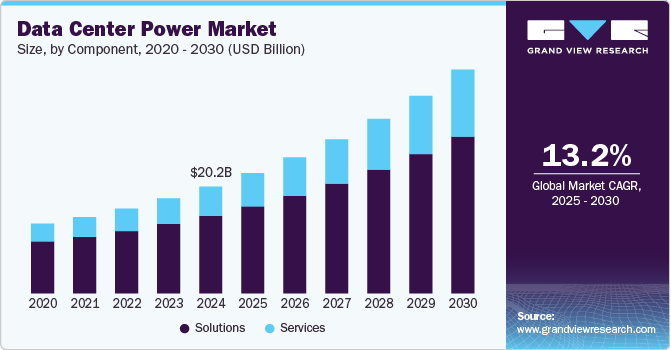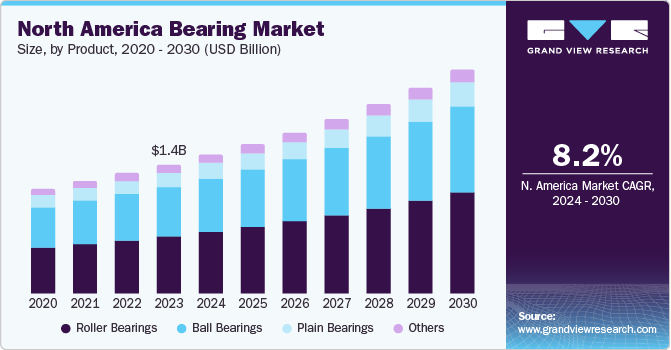Cybersecurity Mesh Market Size, Share & Trends Analysis growing at a CAGR of 11.9% from 2025 to 2033

The cybersecurity mesh market size was estimated at USD 2.59 billion in 2024 and is projected to reach USD 7.03 billion by 2033, growing at a CAGR of 11.9% from 2025 to 2033. The increasing sophistication of cyberattacks, as well as the shift of assets to the hybrid multi-cloud, is driving the market growth.
Key Market Trends & Insights
- North America dominated the cybersecurity mesh market with the largest revenue share of 40.7% in 2024.
- In the U.S., the rapid growth of cloud-native applications and multi-cloud environments across the country is accelerating the demand for cybersecurity mesh systems.
- By offering, the solutions segment led the market with the largest revenue share of 73.3% in 2024.
- By deployment, the cloud segment accounted for the largest market revenue share in 2024.
- By enterprise size, the large enterprises segment accounted for the largest market revenue share in 2024.
Market Size & Forecast
- 2024 Market Size: USD 2.59 Billion
- 2033 Projected Market Size: USD 7.03 Billion
- CAGR (2025-2033): 11.9%
- North America: Largest market in 2024
- Europe: Fastest growing market in 2024
Request a free sample copy or view report summary: https://www.grandviewresearch.com/industry-analysis/cybersecurity-mesh-market-report/request/rs1
The increasing adoption of zero-trust principles is driving demand for cybersecurity mesh frameworks. Zero trust emphasizes continuous verification of users, devices, and network traffic, regardless of where they originate.
Cybersecurity mesh provides the architectural support for zero trust by allowing context-aware, identity-centric access control to be extended across dynamic and distributed environments. By enabling security to be applied closer to the identity and asset in question, mesh architectures make zero-trust implementations more practical and scalable. As regulatory frameworks and industry best practices increasingly recommend or mandate zero-trust adoption, organizations are turning to cybersecurity mesh as a way to operationalize these policies effectively.
Cybersecurity mesh architecture is a scalable and modular solution to extending security controls, even to widely dispersed assets. Because of its versatility, it is particularly well suited for more modular strategies that are compatible with hybrid multi-cloud systems. A more modular, adaptable, and robust security ecosystem is made possible by Cybersecurity Mesh Architecture (CSMA). A cybersecurity mesh allows technologies to communicate with one another through a number of supporting layers, such as security intelligence, centralized policy management, and identity fabric, as opposed to each security tool operating in a separate silo. These beneficial factors are expected to propel the demand of the market in future years.
Further, with the help of CSMA, people and machines can securely communicate from various places, across channels, different generations of apps, and hybrid and multi-cloud settings. At the same time, all the company’s digital assets are protected. This promotes a more constant security posture to support more agility for the composable company. In order to facilitate the integration of security solutions, CSMA offers a number of enabling services, including security analytics, distributed identity fabric, intelligence, automation, and triggers, as well as centralized policy administration and orchestration.
The identity and security architectures cannot meet the continuously shifting needs at present, as they currently stand. All assets, whether they are on-premises, in data centers, or the cloud, may be secured with the help of CSMA, which helps to offer a standard, integrated security structure and posture. By standardizing how the tools link, CSMA enables standalone solutions to cooperate in complementary ways to enhance the overall security posture. For instance, it helps shift control points closer to the assets intended to safeguard and centralizes policy management. The above aspects are expected to fuel the demand for the cybersecurity mesh industry across regions during the forecast period.
Offering Insights
The solution segment led the market with the largest revenue share of 73.3% in 2024. Cybersecurity mesh solutions have been made possible by the emergence of technologies like edge computing, machine learning, and artificial intelligence. These technologies boost the entire security posture by enabling intelligent threat detection, behavior analytics, and automated responses at the edge. Strict regulatory and compliance standards relating to data security and privacy are applicable to many businesses. By applying security controls at the device level, cybersecurity mesh solutions allow organizations to prove compliance with these standards more thoroughly and granularly. This is expected to boost the demand for cybersecurity mesh solutions among the end-use industries over the forecast period.






